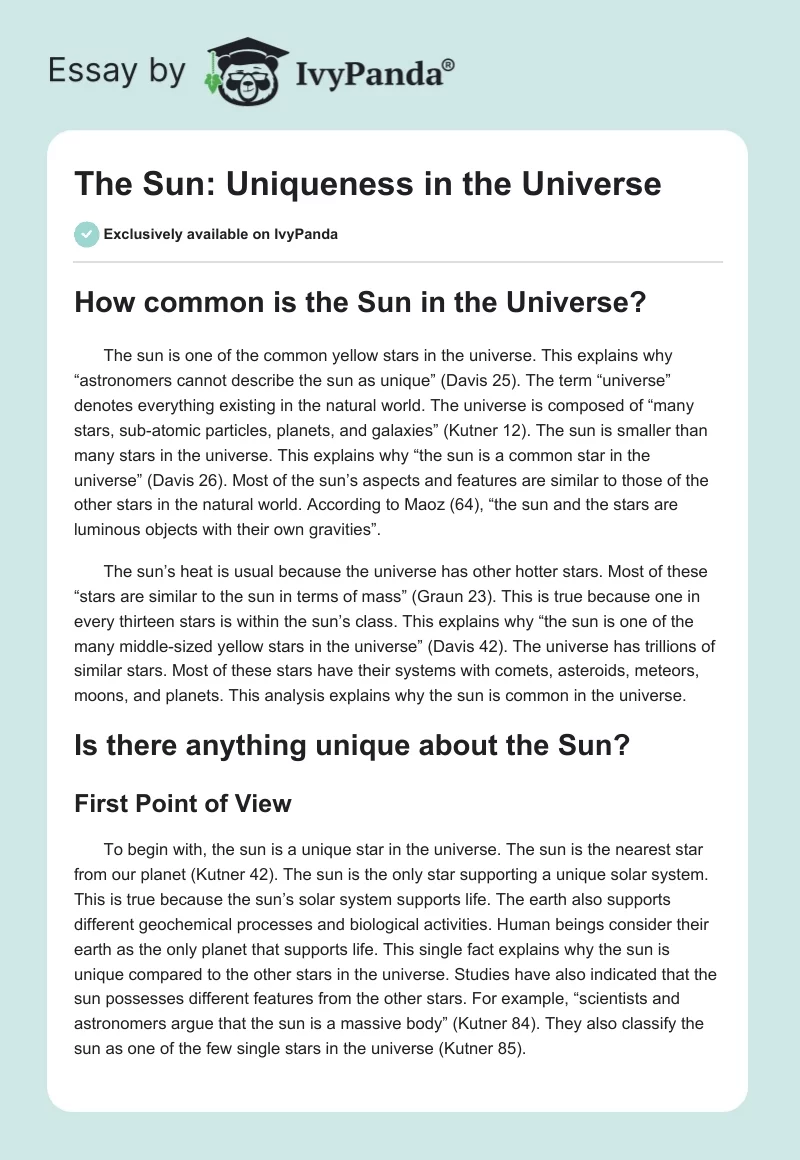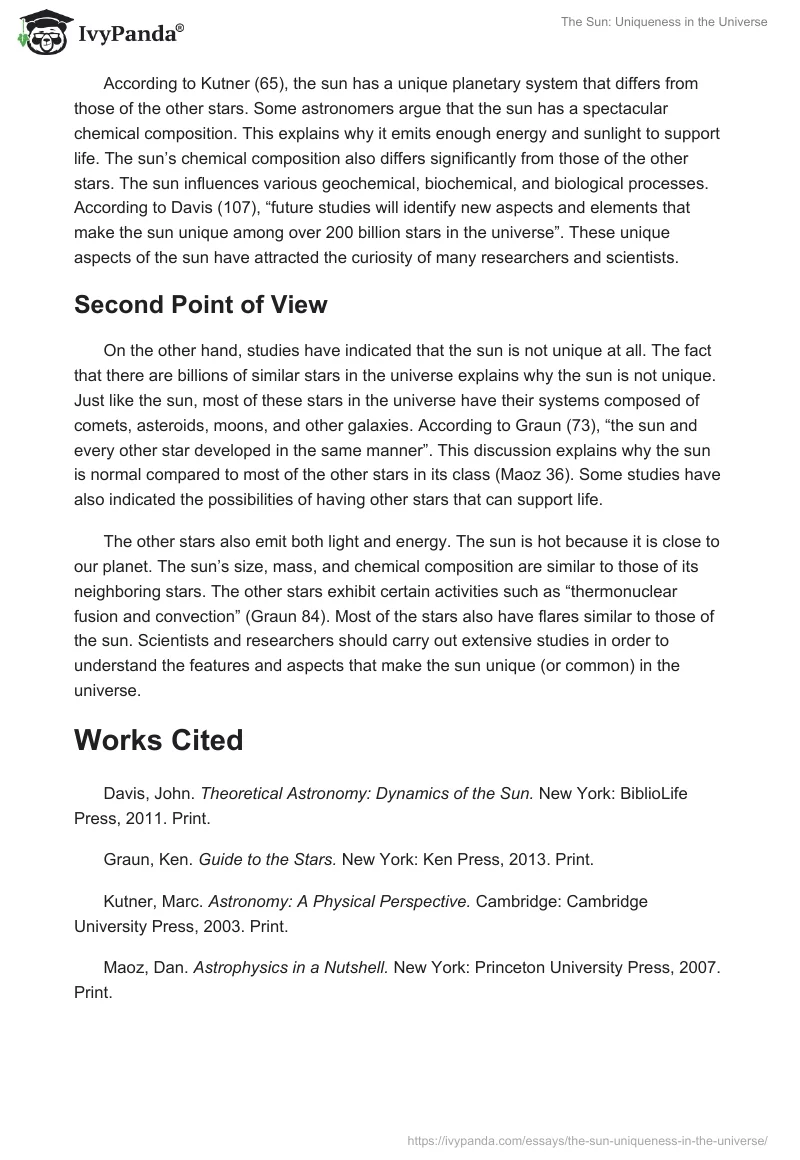How common is the Sun in the Universe?
The sun is one of the common yellow stars in the universe. This explains why “astronomers cannot describe the sun as unique” (Davis 25). The term “universe” denotes everything existing in the natural world. The universe is composed of “many stars, sub-atomic particles, planets, and galaxies” (Kutner 12). The sun is smaller than many stars in the universe. This explains why “the sun is a common star in the universe” (Davis 26). Most of the sun’s aspects and features are similar to those of the other stars in the natural world. According to Maoz (64), “the sun and the stars are luminous objects with their own gravities”.
The sun’s heat is usual because the universe has other hotter stars. Most of these “stars are similar to the sun in terms of mass” (Graun 23). This is true because one in every thirteen stars is within the sun’s class. This explains why “the sun is one of the many middle-sized yellow stars in the universe” (Davis 42). The universe has trillions of similar stars. Most of these stars have their systems with comets, asteroids, meteors, moons, and planets. This analysis explains why the sun is common in the universe.
Is there anything unique about the Sun?
First Point of View
To begin with, the sun is a unique star in the universe. The sun is the nearest star from our planet (Kutner 42). The sun is the only star supporting a unique solar system. This is true because the sun’s solar system supports life. The earth also supports different geochemical processes and biological activities. Human beings consider their earth as the only planet that supports life. This single fact explains why the sun is unique compared to the other stars in the universe. Studies have also indicated that the sun possesses different features from the other stars. For example, “scientists and astronomers argue that the sun is a massive body” (Kutner 84). They also classify the sun as one of the few single stars in the universe (Kutner 85).
According to Kutner (65), the sun has a unique planetary system that differs from those of the other stars. Some astronomers argue that the sun has a spectacular chemical composition. This explains why it emits enough energy and sunlight to support life. The sun’s chemical composition also differs significantly from those of the other stars. The sun influences various geochemical, biochemical, and biological processes. According to Davis (107), “future studies will identify new aspects and elements that make the sun unique among over 200 billion stars in the universe”. These unique aspects of the sun have attracted the curiosity of many researchers and scientists.
Second Point of View
On the other hand, studies have indicated that the sun is not unique at all. The fact that there are billions of similar stars in the universe explains why the sun is not unique. Just like the sun, most of these stars in the universe have their systems composed of comets, asteroids, moons, and other galaxies. According to Graun (73), “the sun and every other star developed in the same manner”. This discussion explains why the sun is normal compared to most of the other stars in its class (Maoz 36). Some studies have also indicated the possibilities of having other stars that can support life.
The other stars also emit both light and energy. The sun is hot because it is close to our planet. The sun’s size, mass, and chemical composition are similar to those of its neighboring stars. The other stars exhibit certain activities such as “thermonuclear fusion and convection” (Graun 84). Most of the stars also have flares similar to those of the sun. Scientists and researchers should carry out extensive studies in order to understand the features and aspects that make the sun unique (or common) in the universe.
Works Cited
Davis, John. Theoretical Astronomy: Dynamics of the Sun. New York: BiblioLife Press, 2011. Print.
Graun, Ken. Guide to the Stars. New York: Ken Press, 2013. Print.
Kutner, Marc. Astronomy: A Physical Perspective. Cambridge: Cambridge University Press, 2003. Print.
Maoz, Dan. Astrophysics in a Nutshell. New York: Princeton University Press, 2007. Print.


